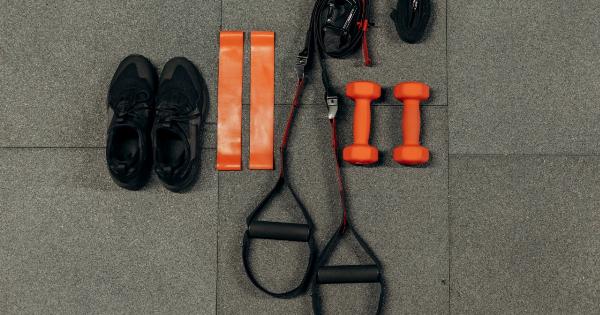Living with dialysis can be challenging, but there are ways to help manage the condition. One essential aspect of dialysis care is physical activity.
Exercise can provide numerous benefits to individuals with dialysis, from reducing the risk of chronic diseases to improving overall well-being.
The Benefits of Exercise for Dialysis Patients
Physical activity has many benefits for dialysis patients, including:.
1. Improved Cardiovascular Health
Regular exercise can help keep your heart and blood vessels healthy. Dialysis patients are at a higher risk of cardiovascular disease, and physical activity can help reduce that risk significantly.
2. Increased Energy and Stamina
Dialysis can leave many patients feeling fatigued. Regular exercise can help build stamina and increase energy levels. This improved physical fitness can lead to a better quality of life.
3. Reduced Risk of Depression and Anxiety
Dialysis can be mentally and emotionally taxing, leading to depression and anxiety. Exercise has been shown to improve mood and reduce the risk of these mental health conditions.
4. Better Blood Sugar Control
High blood sugar levels can lead to complications in dialysis patients, such as nerve damage, kidney damage, and blindness. Regular exercise can help lower blood sugar levels and reduce the risk of these complications.
5. Stronger Bones and Muscles
Physical activity can help build stronger bones and muscles, reducing the risk of fractures and falls. This benefit is particularly important for older dialysis patients who are at a higher risk of falls.
Types of Physical Activity for Dialysis Patients
While physical activity is essential for dialysis patients, it is essential to choose the right type of exercise. Some of the best types of physical activity for dialysis patients include:.
1. Walking
Walking is a low-impact form of exercise that is gentle on the joints. It is an excellent option for dialysis patients who are just starting to exercise or who have mobility issues.
Starting with short walks and gradually increasing the duration and intensity over time can help build stamina and improve cardiovascular health.
2. Swimming
Swimming is an excellent form of exercise for dialysis patients as it is low-impact and gentle on the joints. It is also a great way to improve cardiovascular health and build endurance.
Swimming may be particularly beneficial for individuals with joint pain or mobility issues.
3. Cycling
Cycling is another low-impact form of exercise that can help dialysis patients improve their cardiovascular fitness. Stationary bikes may be particularly useful for those who have difficulty balancing or coordination issues.
4. Resistance Training
Resistance training involves using weights, resistance bands, or bodyweight exercises to build muscle strength. This form of exercise can help dialysis patients build strength and improve their overall physical function.
Resistance training should be done under the supervision of a healthcare professional.
Tips for Incorporating Physical Activity into Dialysis Care
Consulting a healthcare professional before beginning or changing any exercise routine is essential. Additionally, these tips can be helpful in incorporating physical activity into dialysis care:.
1. Start Slowly
Starting slowly and gradually increasing the duration and intensity of exercise over time is essential. This approach can help prevent injury and ensure that the body adapts to the new physical demands.
2. Stay Hydrated
Staying hydrated is critical for dialysis patients, especially during periods of physical activity. Drinking plenty of water before, during, and after exercise can help prevent dehydration and manage fluid overload.
3. Monitor Vital Signs
Monitoring vital signs such as blood pressure, heart rate, and oxygen saturation levels during physical activity is essential. These measures can help identify any potential problems and ensure that exercise is safe and appropriate.
4. Listen to Your Body
Dialysis patients should listen to their bodies during physical activity. If they experience pain, dizziness, or shortness of breath, it is essential to stop immediately and seek medical attention if necessary.
Conclusion
Physical activity is an essential part of dialysis care. It can provide numerous benefits, from improving cardiovascular health to reducing the risk of depression and anxiety.
Dialysis patients should consult with their healthcare professionals to ensure that their exercise routines are appropriate and safe.































